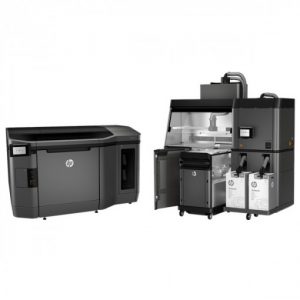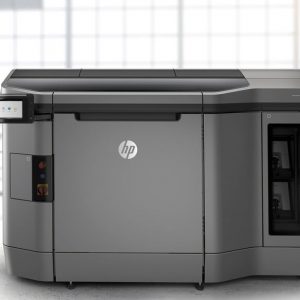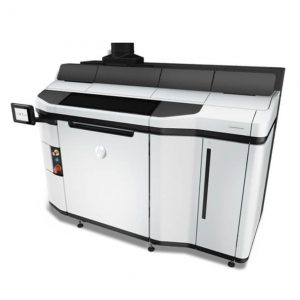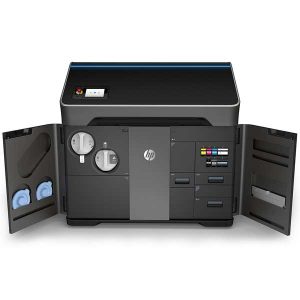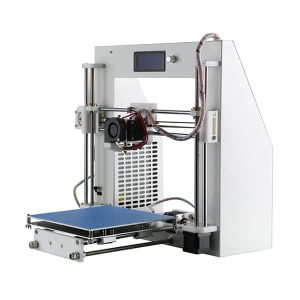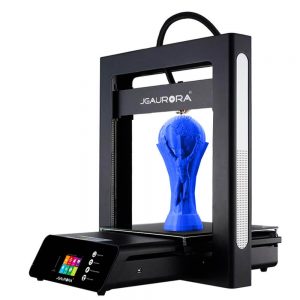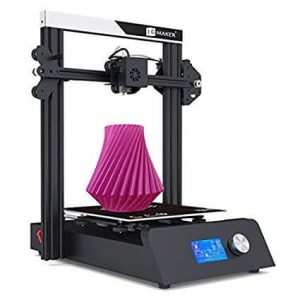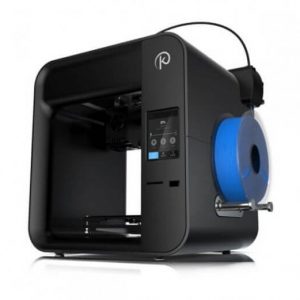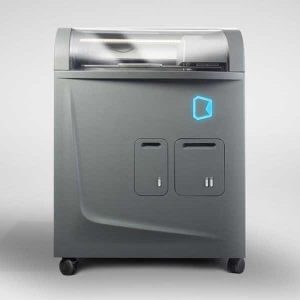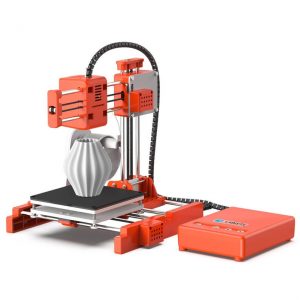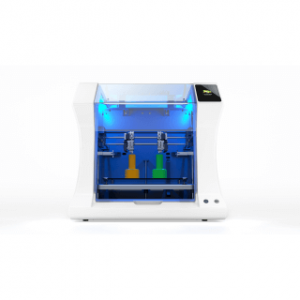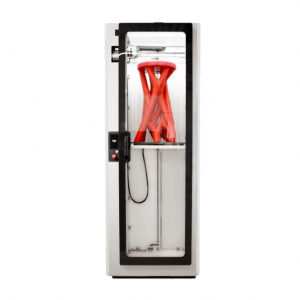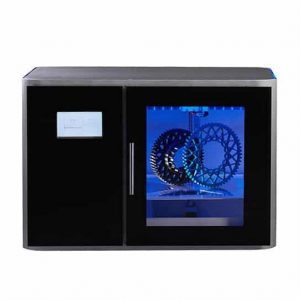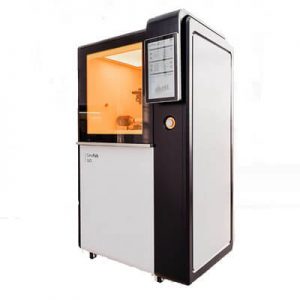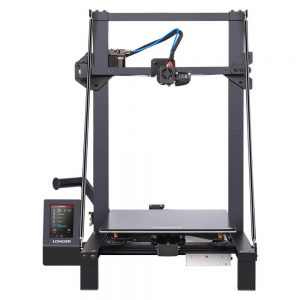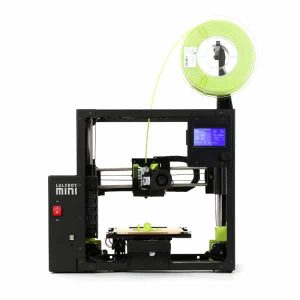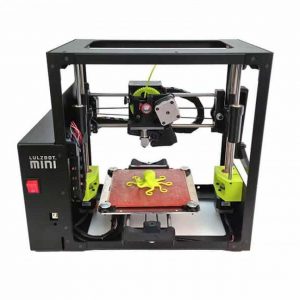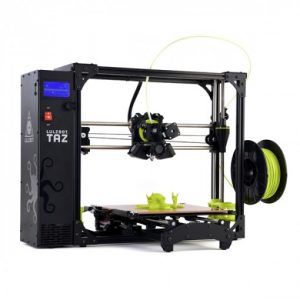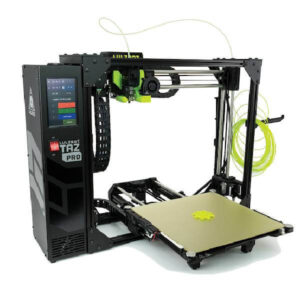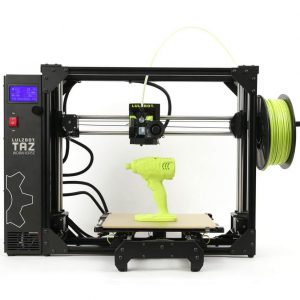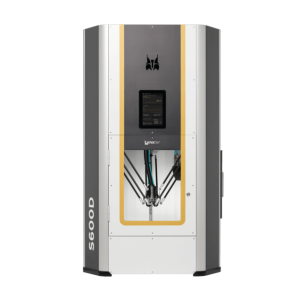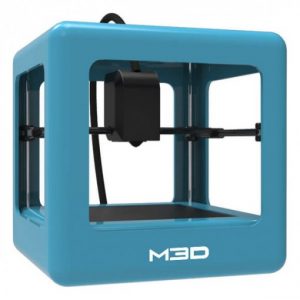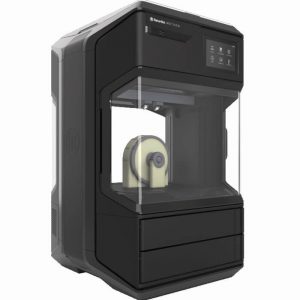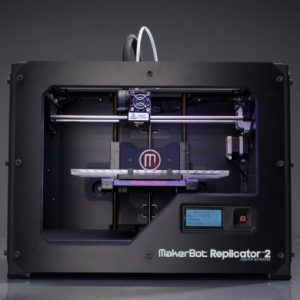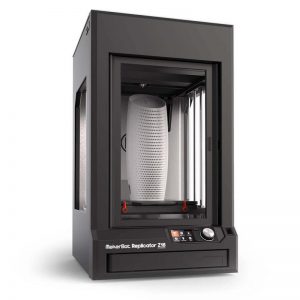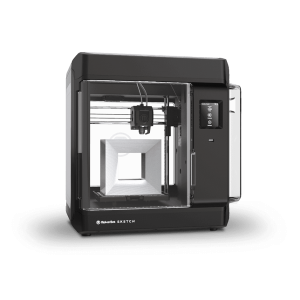Filter
Showing 121–150 of 285 results
PROS:
- Automated mixing, sieving, and loading of material
- Plug and Play
- Fast cooling
- External storage tank
- Large build volume
CONS:
- Expensive
- Occupies large space
PROS:
- The 3D printing speed is fast.
- You get accurate 3D printing with fine detailing.
- For 3D printing a part you need no support structures.
- The quality of the part produced is high.
CONS:
- Initial printing investment is higher compared to others.
- You are not able to produce some curved, hollow geometries.
PROS:
- Printing with five different 3D printing materials.
- Post-processing of parts and functional prototypes is easy.
- High-class software solutions.
- Huge build volume.
- Good quality parts and functional prototypes.
CONS:
- The cost of this 3D printer is too high for any beginner to even think of paying it. Even if you are a 3D printing professional you have many other options to deliver a similar range of quality at a much lower price.
PROS:
- Accurate functional parts with intricate detailing.
- Complete coloring of parts is possible with voxel control.
- The speed of this 3D printing system is tremendous.
- You need no support material.
- It reduces waste.
CONS:
- Although the company claims it as a suitable 3D printer for offices as well as domestic use, you can hardly manage the complexities the printing systems bring to your place.
PROS:
- Precise prints
- Decent speed
- Heated bed
- Multiple material support
- Compatible with Cura
- Affordable
CONS:
- Difficult to assemble
- Manual calibration
- Open frame
PROS:
- Full metal construction
- Full-color LCD touchscreen
- Filament run-out sensor
- Easy to assemble
- USB stick
- Power off recovery
CONS:
- Produces lots of noise while printing
- Hard to work on
PROS:
- Highly affordable
- Easy to setup
- Multiple filament support
- Heated print bed
- Print resume option (both for a power outage or accidental removal of SD card)
- Acceptable print quality with smoother surface finish
CONS:
- May not suit professionals with much complex print requirements
- No auto bed leveling
- Upgrades are difficult
- Not a plug and play machine
PROS:
- Cloud platform
- Plug and Play
- Many Automated Features like bed leveling and nozzle retraction
- Power Recovery
- Dual Extrusion
- Heated Glass Bed
- Touch Screen Interface
CONS:
- Firmware updated frequently
- Manual Calibration
- Aesthetic looks of touchscreen
PROS:
- Compact
- Plug and play
- Nice resolution at this price
- Heated bed
- Remote monitoring
- Open design is compatible with open source slicing software
- Affordable
CONS:
- The basic version does not have enough feature
PROS:
- Ceramo Two has a build volume that is rarely seen in 3D printers specializing in ceramic 3D printing.
- The print speed of this 3D printer is in talks since its announcement. It is said to be one of the finest 3D print speed ever in the field of ceramic 3D printing.
CONS:
- Lack of proper information regarding the printer is probably something that's going to hinder the 3D printer for a long time.
- As far as features are concerned, people may find this printer expensive.
PROS:
- Removable magnetic build plate.
- Preloaded slicing software.
- Low power consumption.
- Ready to print, pre assembled.
- Fast heating.
- High precision.
- Silent working mode.
CONS:
- Low build volume.
- Printing with PLA only.
- Non uniform heating.
- Irregularities on surface of the 3D printed part.
PROS:
- It possesses independent dual extruders
- Enclosed chamber
- The built-in camera along with the custom Octoprint plugin for enabling remote monitor and control
- Recording of automatic time lapses;7″ touch screen display
- Extruder priming and wiping before every new print use
- Direct filament feeder
- Assisted dual-head calibration
- Enhanced cooling fans setup
CONS:
- Users have reported of filament tangling when spools with too much filament are used
- Times taken for heating is more than 5 minutes
- Manual bed leveling
PROS:
- Dual extruder
- Large print space
- Automatic calibration
- User-friendly User Interface
- High Speed
- Great Precision
- Third-party filaments allowed for printing
- Compatible with a large number of filament type
CONS:
- Expensive
- Not suited for home users
- Bulky
PROS:
- Large-volume
- High precision
- Dual extruder
- Professional grade printing
- Heated bed
CONS:
- Expensive for professionals and home users
PROS:
- Has modular design which gives four production units.
- Huge build volume.
- Minimal layer resolution.
CONS:
- Price is a huge concern for the users of technology inferior to DLP.
PROS:
- 4.3 inch touch screen interface to ease out the interaction.
- Auxiliary leveling and humanized design.
- High-quality lattice glass easing bed adhesion.
- Top-quality blue Teflon tube resisting high temperatures.
- TMC ultra-quiet drive for silent, noise-proof operations.
CONS:
- Not only LK5 Pro but in general every open-bodied 3D printer has the problem of generating temperature as opposed to printers that host a print chamber.
- Setup is an issue if you are not used to many manual adjustments.
PROS:
- Supports filament break detection, resume printing after power loss and a stopped print and also supports online or TF card offline printing.
- 3.5-inch Touch LCD Screen.
- Support 7 languages - Chinese, English, German, Russian, Spanish, French, Italian.
- Integrated metal body design.
- Mute printing.
CONS:
- Open body of the 3D printer makes it hard for you to achieve the glass transition temperature of the filament material.
- Part quality is average.
PROS:
- The 3D printer is very reliable with a sturdy design
- The compact design is impressive
- Plug and play setup
- Automatic bed leveling
- Compatible with a large type of materials
- User-friendly user interface
- It offers a 20 percent larger build volume than its predecessor
- High print speed
CONS:
- Print quality with high speed isn’t very impressive
- Small build volume
PROS:
- PEI print surface
- Beginner’s friendly
- Sturdy Design
- Automatic calibration
- Auto-cleaning of nozzle
- Comprehensive documentation
- Reliable
- Open-source hardware, hence expandable
CONS:
- Missing LCD control
- Very Small build volume
- Requires a connection to the PC for operation
- Noisy
PROS:
- Lulzbot TAZ 6 has a huge build size i.e. (280 x 280 x 250 mm).
- The printer is reliable and gives consistent printing performance.
- The frame of the printer is solid, also it has a sturdy design.
- Lulzbot TAZ 6 is easy to use and setup.
- You can auto-calibrate this printer and self-clean the nozzle.
- The printer is open-sourced and hackable.
- You can do untethered printing on the PEI print surface.
CONS:
- The printer is priced much higher than others offering the same amount of features.
- Lulzbot TAZ 6 is slightly noisy.
- Has a limited user control when operated in untethered mode.
- You’d have to take a slow initial setting up the printer because of slicer issues.
PROS:
- E3D Titan Aero extruder
- Automatic bed leveling
- Automatic nozzle cleaning
- PEI coated heated print bed
- Large build space
- Great print quality
- Amazing print speed
- Pre-existing Filament profiles
- Filament run-out sensor
- Open-source Hardware
CONS:
- Missing WIFI connectivity
- No remote control
- Expensive
PROS:
- High speed
- High accuracy when printing
- Automatic bed leveling
- Automatic nozzle cleaning
- E3D extruder
- Heated Build surface
- PEI coated surface
- Swappable tool heads
CONS:
- Lack of Wifi Connectivity
- Expensive for home users
- No remote access
PROS:
- It’s a versatile 3D printer that is openly helpful to you to choose projects from the community.
- The printer’s scalable and smart.
- S600 D secures the operator from harmful fumes.
CONS:
- Part Quality produced by S600 D is a little bit of concern.
PROS:
- The printer provides highly accurate results
- It is the best choice for smaller projects
- The printer is highly affordable for beginners as well as schools
- It flaunts easy operation
- Noiseless printer
CONS:
- Not suitable for large projects
- Speed isn’t very impressive when printing at a higher resolution
- Lack of onboard memory is present
PROS:
- Automatic Z Calibration.
- Automatic Nozzle Calibration.
- Automatic Material Loading.
- Much of the printing system is completely automated thereby decreasing the overall inefficiency associated with the printer.
- The printer is also well integrated with the CAD software meaning that all the flaws in the design can already previously be viewed and disposed of at the correct moment.
CONS:
- The printer has a closed chamber which would mean that manual cooling would be needed after the part is printed. This would in turn lead to an increase in overall print time needed for an object.
PROS:
- Professional interface.
- Good PLA filament.
- Excellent software.
- Active user community.
- Plug and Play.
CONS:
- Clogged print heads.
- Acrylic build plate.
PROS:
- Smart extruder plus
- Compact
- Easy to set up (in just 10 minutes)
- Auto calibration
- Auto bed leveling
- Reliable
- Great customer support
- Removable build plate
CONS:
- No dual extruder
- Compatible only with PLA
- Does not support high temperature
- 100 microns precision
Best price
PROS:
- Sleek and can be used inside your house as well
- It is easy to set up with the help of instructions available on the mobile app
- WiFi connectivity available
- Remote monitoring is possible on mobile phones and tablets
- Nice print speed
- Larger build volume in comparison to its predecessor
CONS:
- Print Quality isn’t justified when put across the price tag the printer owns
- The USB port has connection issues
- Non-heated build plate causes warping
- Third-Party filament usage limitation
- Open Design and risky to use around kids and beginners
PROS:
- Build volume area is perhaps, one of the strongest advantages of buying this 3D printer. This spacious area has been mentioned a couple of times above too because it leverages a better advantage to the customers in the long run. This big space enables customers to print bigger items and offers a competitive advantage over other printers. It breaks barriers of normal limitations associated with 3D printers and exceeds their limits, especially in the case of consumer-focused printers.
- This 3D printer comes with a sophisticated design that has a 3.5” liquid crystal display, stronger connectivity options, inbuilt camera. Such a comprehensive design allows users to make better use of the technology available at their hands and deliver simple functionalities to them. Even though it has a bigger build area, it features a compact look. This compact look is encased in dimensions of 19.4” x 22.2” x 33.9”.
- This print is controlled through the use of either mobile or cloud applications. Such flexibility makes way for better accessibility to the end-users through all the printing stages and enables users to control features, power, and print types right from the comfort of their desk. The inbuilt camera allows users to continuously monitor different printing as well as connectivity phases. Such a comprehensive utility ensures that the customers are in true control of what goes behind during the printing process.
CONS:
- Forcefully making use of a 3rd party filament for printing purposes automatically voids a customer’s printer’s warranty.
- It only supports PLA.
Best price
PROS:
- You can maximize student innovation using this 3D printer setup. It gives you the facility as a teacher to combine hybrid classroom teaching with hands-on learning and unlock students’ creative potential with accessible printing merged with project-based learning.
- You can develop professionally, and gain confidence by following the fifteen hours of student curriculum with Design thinking and 3D printing. It provides you ISTE certification not only if you are a teacher, but also if you are a student. There is 3D printing integrated curriculum available for teachers that are applicable with PD credit.
- The printer allows you to have a 3D printing collaboration from anywhere. You do not necessarily need to be around the 3D printer. The free cloud-based software with Makerbot Cloud print can be integrated with Google classroom. It will allow you to design print integrations across familiar software such as Tinkercad, Fusion 360, and Onshape.
- By buying it, you avail the opportunity to join the largest 3D printing community of educators. Allow yourself to learn from curated lessons that are created by Makerbot Certified Educators and access more than 600 lesson plans across various grade levels and subjects.
CONS:
- Makerbot Sketch Classroom needs active participation from your end. Whether you are a student or a teacher, you will have to also search for new ways to work out with this 3D printer. Also, after a point of time, you’d realize that the printer will not be effective enough to print intricately designed parts and functional prototypes on it. It can provide a basis for those who do not know 3D printing at all. But if you are a user who is above it, this 3D printer is definitely not for you.

